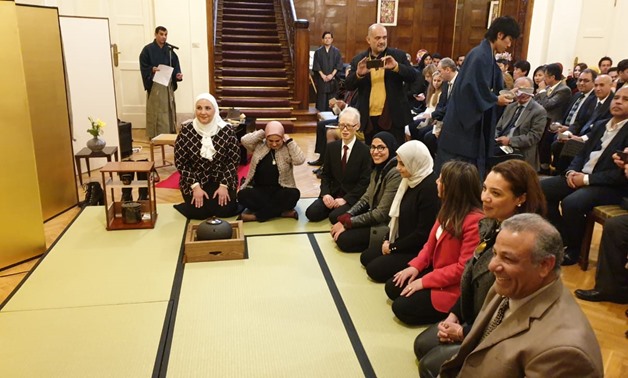
Side of the Japanese traditional tea ceremony hosted at the Japan's Ambassador to Cairo's house, where Minister of Social Solidarity Nevin al-Qabbaj (L) participates in the ceremony Japanese Ambassador Masaki Noke.
CAIRO – 18 January 2020: Japanese Ambassador to Cairo Masaki Noki hosted Saturday the Japanese tea ceremony “Hatsugama,” to celebrate the beginning of the first year of a new era in Japan.
Noke said that the current era carries a different name since May, which is “Reiwa,” and it means beautiful harmony and cultural thrive among people.
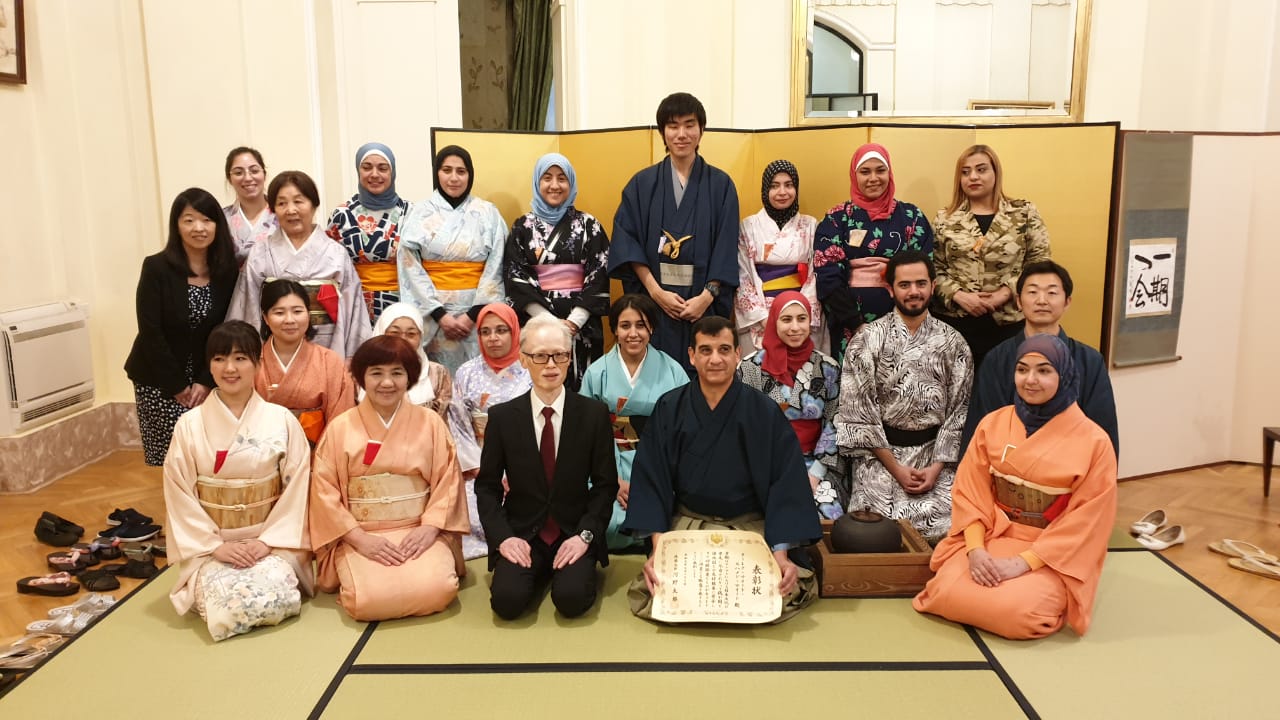 Side of the Japanese traditional tea ceremony hosted at the Japan's Ambassador to Cairo's house
Side of the Japanese traditional tea ceremony hosted at the Japan's Ambassador to Cairo's house
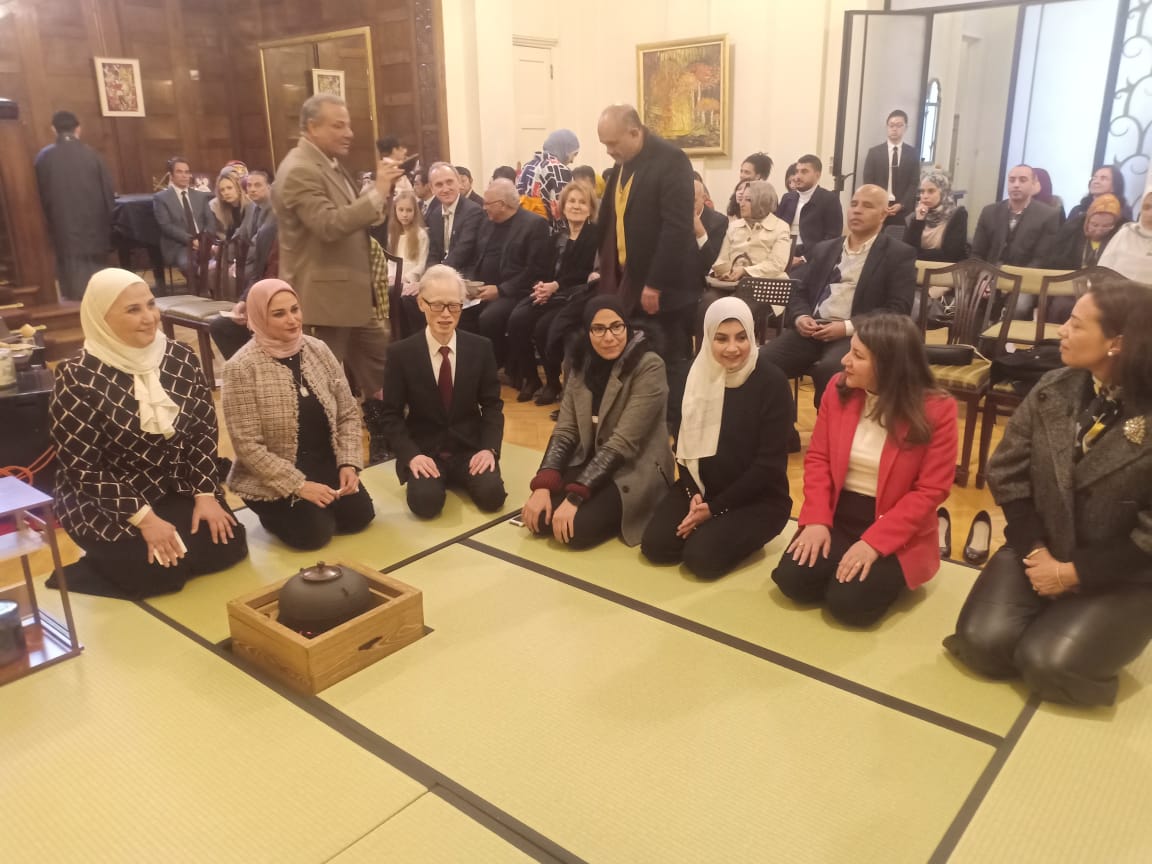 Side of the Japanese traditional tea ceremony hosted at the Japan's Ambassador to Cairo's house
Side of the Japanese traditional tea ceremony hosted at the Japan's Ambassador to Cairo's house
Hatsugama is a special Japanese tea ceremony, but this time, according to Ambassador Noke, the ceremony marks the inauguration of a new emperor of Japan.
Newly appointed Minister of Social Solidarity Nevin al-Qabbaj participated in the traditional ceremony, as the main guest, where she observed the preparation rituals of the Japanese tea “Matcha.”
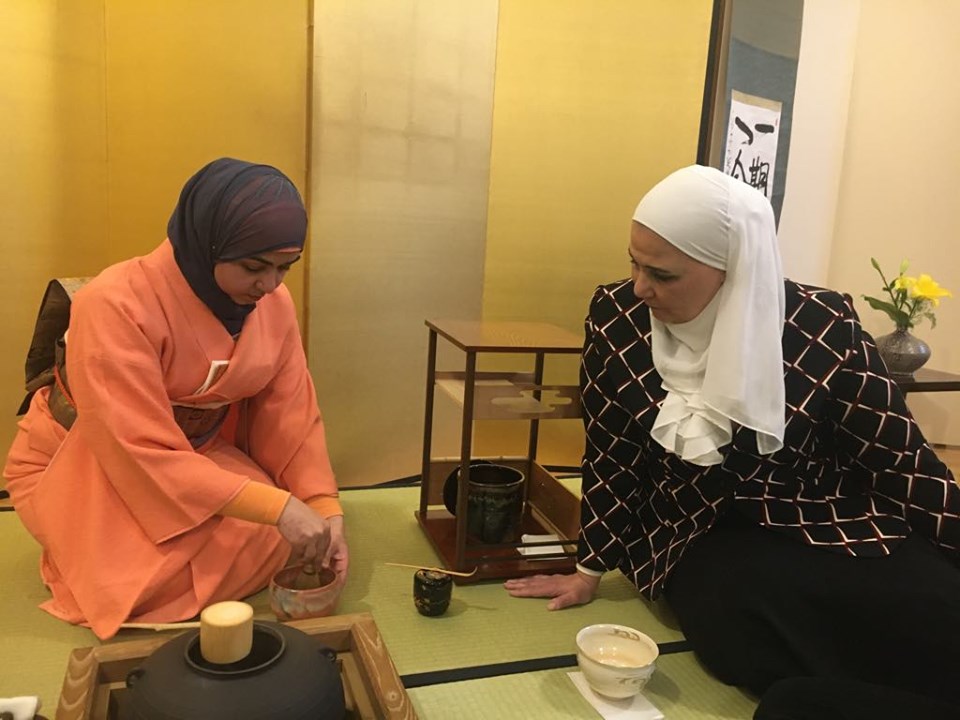 Minister of Social Solidarity Nevin al-Qabbaj while participating in the Japanese traditional tea ceremony - Photo by Nourhan Magdi/Egypt Today
Minister of Social Solidarity Nevin al-Qabbaj while participating in the Japanese traditional tea ceremony - Photo by Nourhan Magdi/Egypt Today
During the ceremony, Ambassador Noke honored Egyptian Tareq el-Sayed for his efforts to introduce the rituals of the tea ceremony “Sado” to Egyptians, and for enhancing mutual understanding and strengthening cultural relations between both countries.
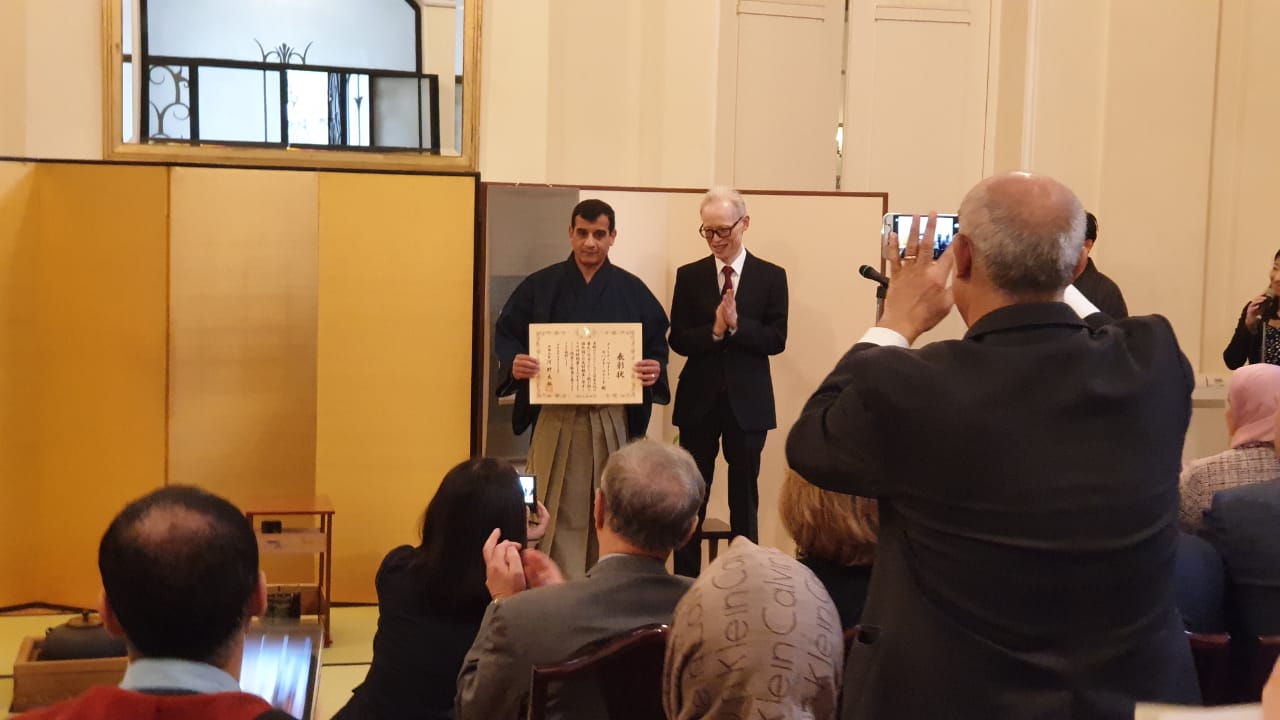 Side of the Japanese traditional tea ceremony hosted at the Japan's Ambassador to Cairo's house
Side of the Japanese traditional tea ceremony hosted at the Japan's Ambassador to Cairo's house
Tariq studied Japanese tea ceremony rituals for two years at Urasenke Specialized School, and obtained a license as a trainer, and as of the year 2011, he devoted himself to teaching and training others.
What is Chado?
Chado, commonly referred to as “Tea Ceremony” in English, is actually a spiritual and aesthetic discipline for refinement of the self – known as a ‘way.’ Through the Way of Tea, there are four principles that are sought, which are: harmony, respect, purity and tranquility. Understanding and appreciation of the Way of Tea are achieved through practice and study.
Matcha is powdered green tea that is blended with hot water.
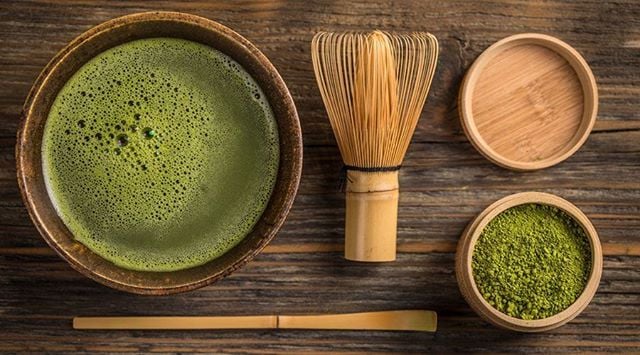
Matcha Utensils - Pinterest
Matcha is made from the same tea leaf as all teas, but the process of streaming and then dying the leaves, followed by crumbling them and then milling the leaf into a powdered makes matcha very different from other teas. Since the lead itself is consumed, match contains many additional healthful substances, including catechin.
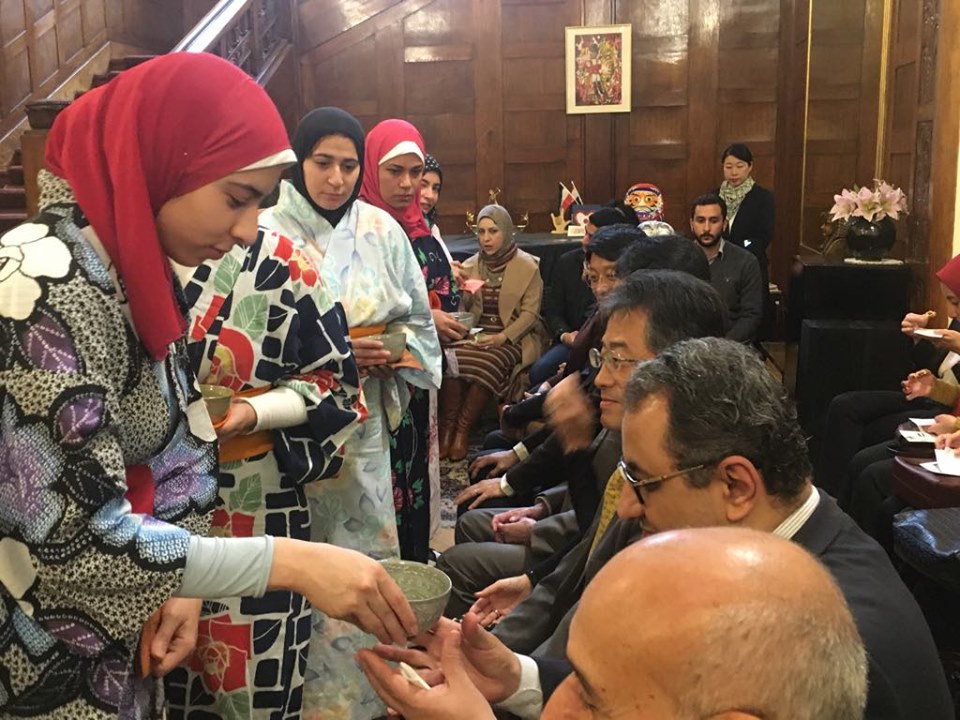
Matcha tea served to attendees during the tea ceremony - Photo by Nourhan Magdi/Egypt Today
Since matcha is blended, not steeped, it requires unique utensils in its preparation. The tea bowl, whisk, scoop, kettle for the hot water, and containers for the tea powder and cold water, have evolved into representative examples of Japanese traditional crafts.
Drinking Match Tea
In Chado, guests play an active role in a tea gathering. Rules of etiquette and behavior for guests have evolved to ensure that the gathering progresses smoothly and harmoniously.
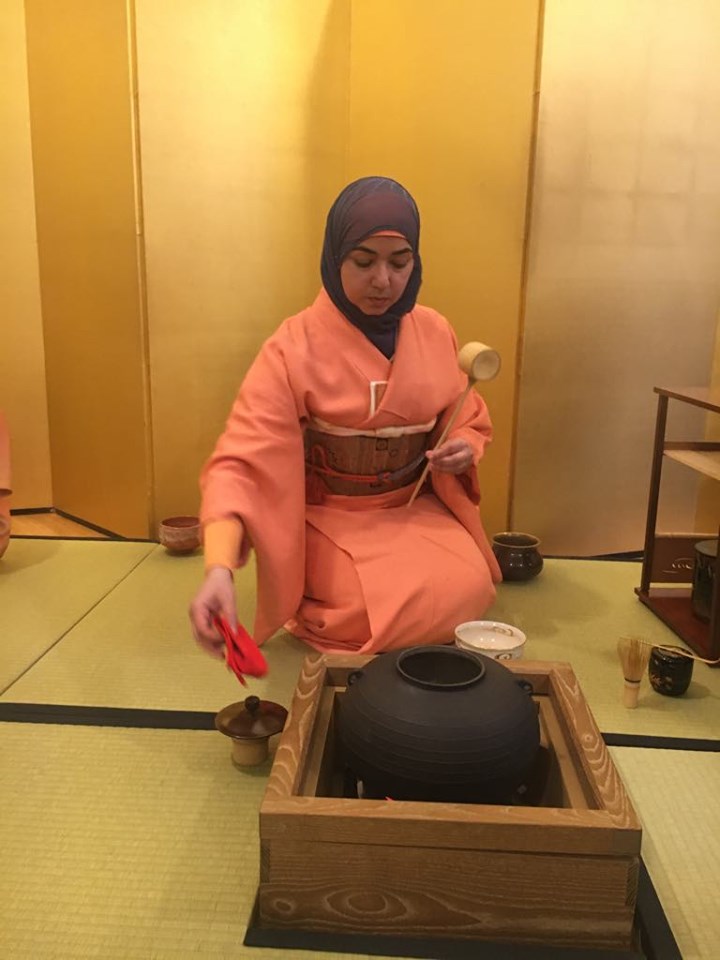
Side of tea ceremony rituals, where the tea is prepared to be served - Photo by Nourhan Magdi/Egypt Today
The tea is served with a traditional sweet cake (Namagashi) made of rice flour and a sweet bean paste filling, and preferably eaten before the tea to balance its sourness.
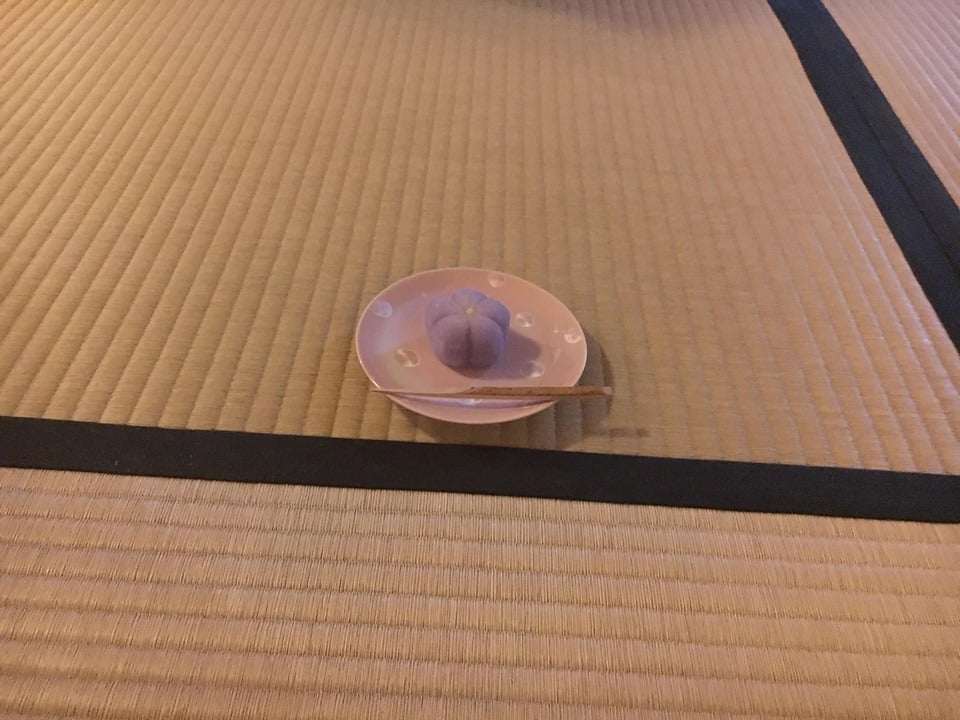
Traditional sweet cake (Namagashi) 🍥 made of rice flour and a sweet bean paste
The guest places the bowl of tea on left palm, bow head slightly to express thanks, turn the bowl clockwise twice, and sip, while the host of the ceremony considering every gesture to make sure the guest is comfortable with the drink.









Comments
Leave a Comment